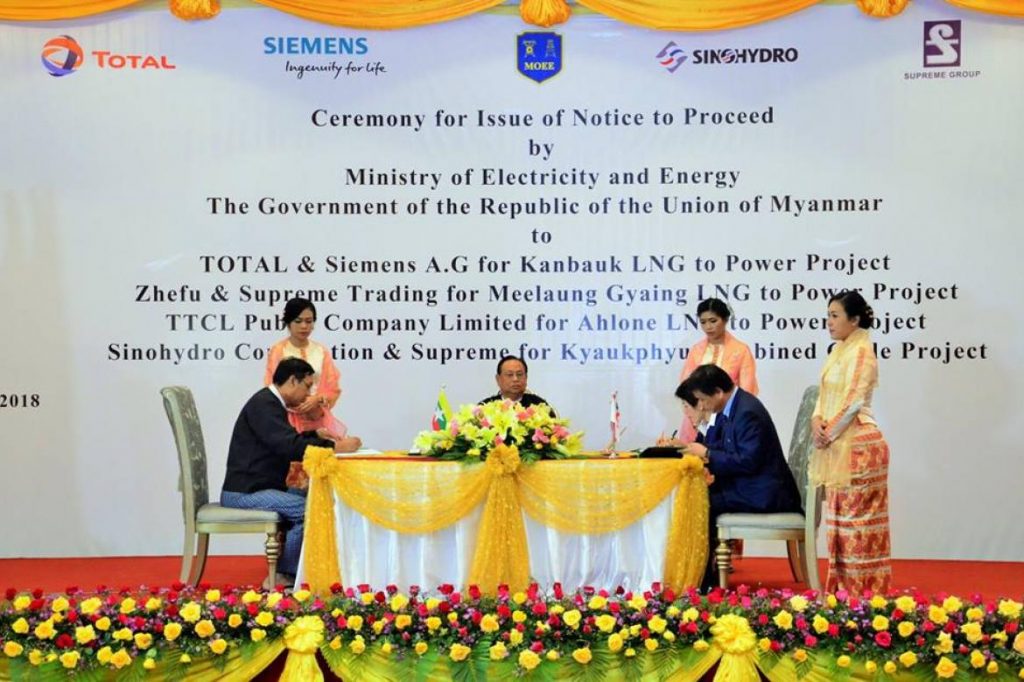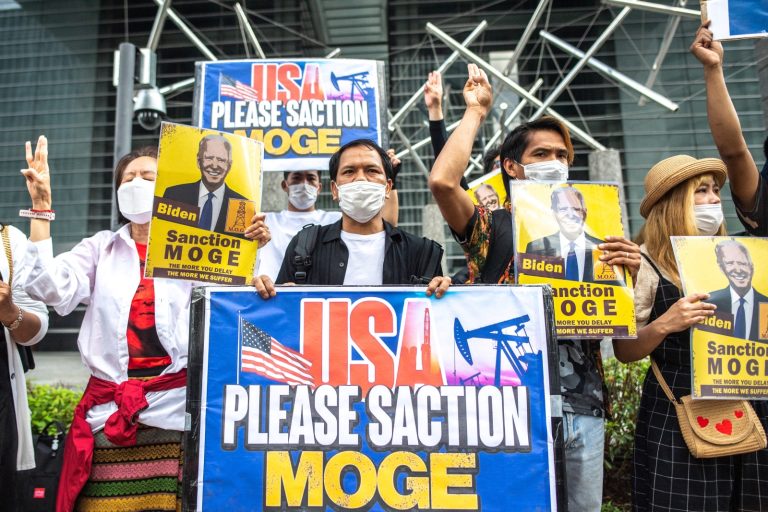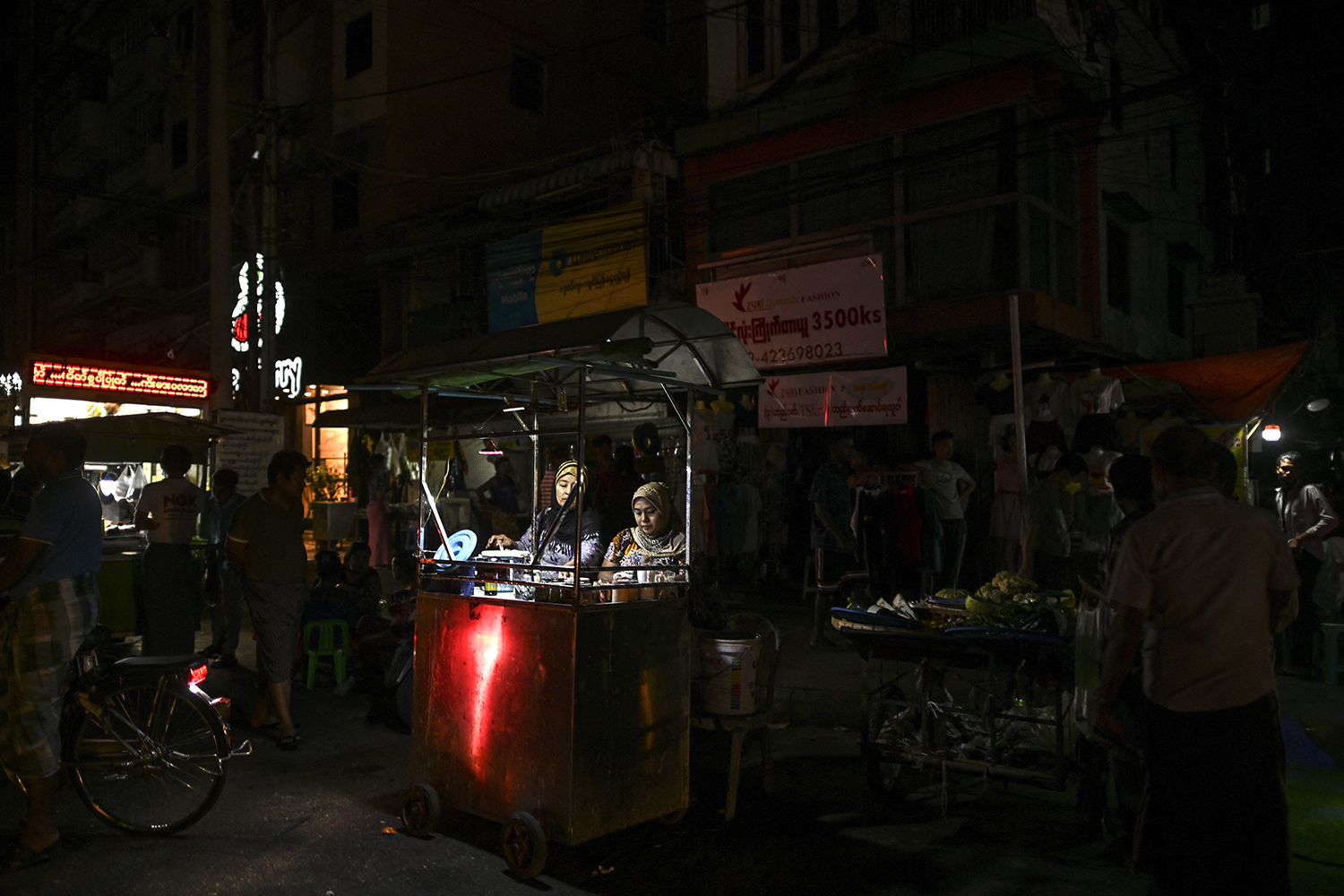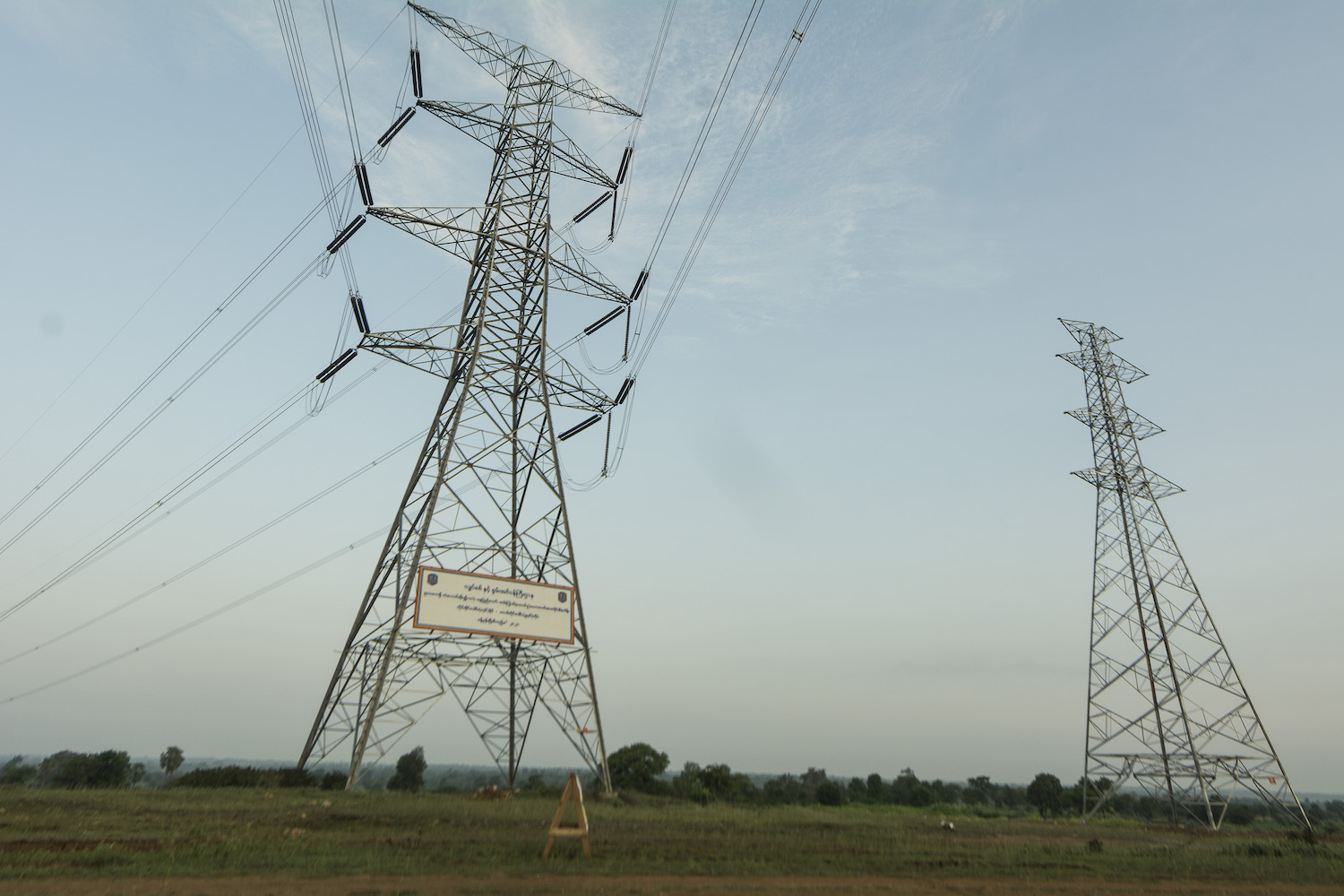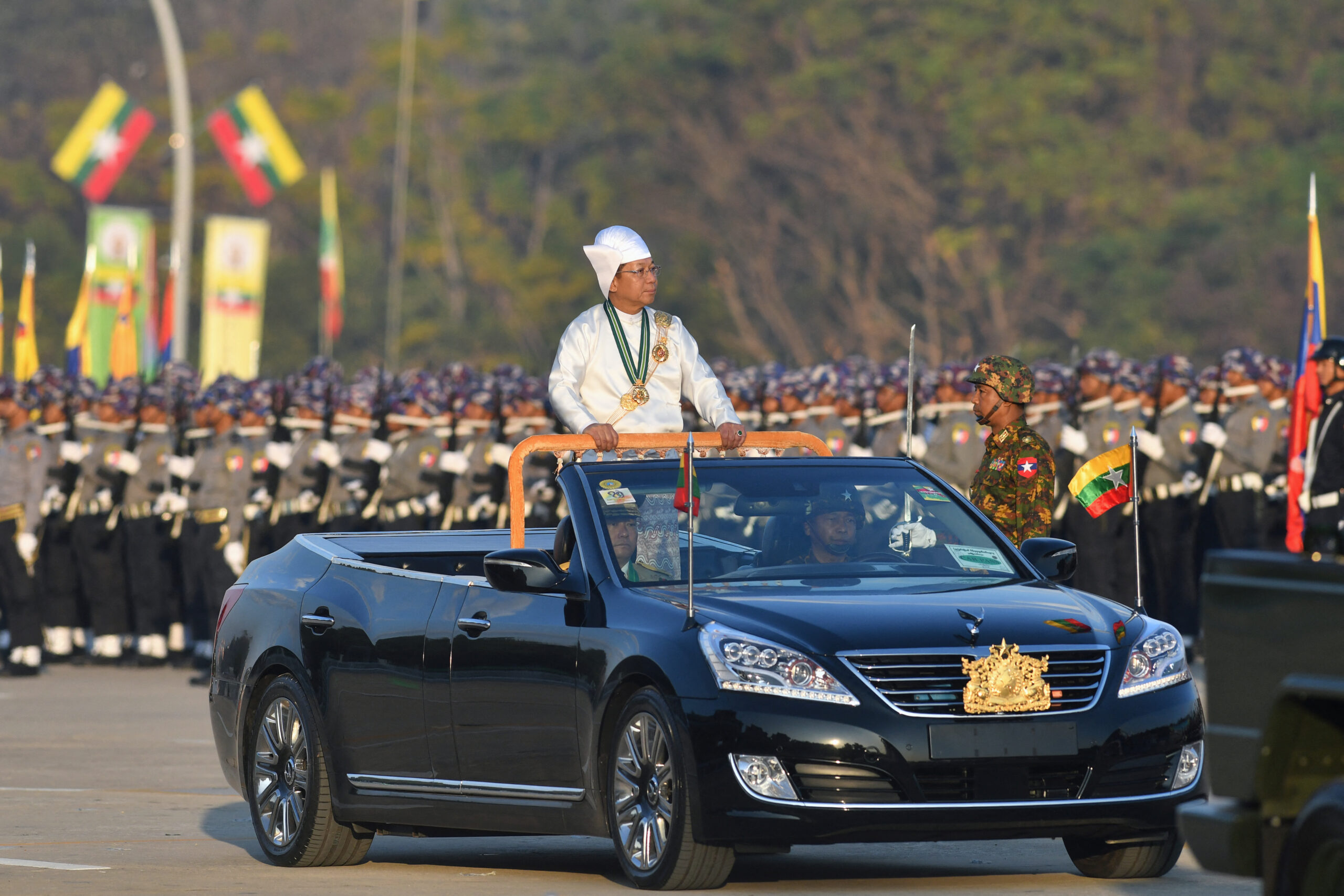By THOMAS KEAN | FRONTIER
YANGON — The government has finally revealed how it plans to meet Myanmar’s growing electricity needs, giving the green light to private investors in four gas-fired projects.
Minister for Electricity and Energy U Win Khaing yesterday oversaw the issuing of a “notice to proceed” to investors in the four projects at a ceremony in Nay Pyi Taw, the ministry announced on its Facebook page this morning.
The projects – comprising several billion dollars of investment – would collectively add more than 3,000 megawatts of capacity to the national network and essentially double existing output.
Three of the projects, at Kanbauk in Tanintharyi Region, Mee Laung Gyaing in Ayeyarwady Region and Ahlone in Yangon Region, are for imported liquefied natural gas. A fourth, at Kyaukphyu in Rakhine State, is for natural gas.
Support more independent journalism like this. Sign up to be a Frontier member.
The government hopes to have at least some of the plants operational by the middle of 2020, ahead of the country’s next general election. However, the two larger projects are likely to take four years to complete.
At Kanbauk, French company Total and Germany’s Siemens will install 1,230MW of capacity in 48 months. The 615MW first phase will come online in three years.
Frontier understands that the project will redeploy some infrastructure from the Yadanar offshore field, which is operated by Total. Output from the field has plateaued and is expected to decline from 2021. Most of the gas is sold to Thailand through a pipeline that makes landfall at Kanbauk. Total did not respond to requests for comment.
A ministry official said the Total/Siemens consortium would also build hundreds of kilometres of high-voltage transmission lines to connect the plant to existing high-voltage lines at Payagyi in Bago Region.
The official said the investment in infrastructure would likely be borne by the investors and recouped through power sales to the government.
“Myanmar can’t yet to produce LNG on its own as it requires a huge investment and technology,” said the director, who was not authorised to speak to the media. “The agreement is likely to state that all of the investment will be covered by the consortium.”
At Mee Laung Gyaing, China’s Zhefu and local company Supreme Group will undertake a 1,390MW LNG project, with the first phase to be completed in 36 months and full capacity ready in 42 months.
As Frontier reported on January 25, the Mee Laung Gyaing project is on a remote stretch of coast north of Chaungtha in Pathein Township. The company plans to build a floating storage regasification unit about 1.6km offshore where 80,000-tonne tankers will be able to dock and offload LNG for the plant.
Project manager U Aung Myo Khaing said Supreme Group had been in talks with the government on the US$2.5 billion plant since December 2015.
“This will be the biggest investment in the country’s electric production and the largest combined-cycle power project in Southeast Asia,” he said.
The other two projects are much smaller and will both be implemented in 28 months, the ministry said.
At Ahlone, Thai company TTCL – better known as Toyo Thai – will build a 356MW LNG plant, while at Kyaukphyu China’s Sinohydro and Supreme will implement a 135MW combined-cycle gas turbine project.
The decision on the three LNG projects ends a selection process that began in September 2016, when the Ministry of Electricity and Energy issued a call for expressions of interest in LNG projects. It was expected to call a tender in early 2017 but instead opted to negotiate directly with some of the companies that responded to the EOI call.
The issuing of the notices to proceed does not necessarily guarantee the projects will come to fruition, however. The government and investors still need to negotiate many of the details, including the power purchasing agreement that will dictate the price at which the government buys power from the consortiums.
The four projects were flagged by Deputy Minister for Electricity and Energy Dr Tun Naing in parliament on January 15, but he did not give exact details about the investors and timeline for implementation.


